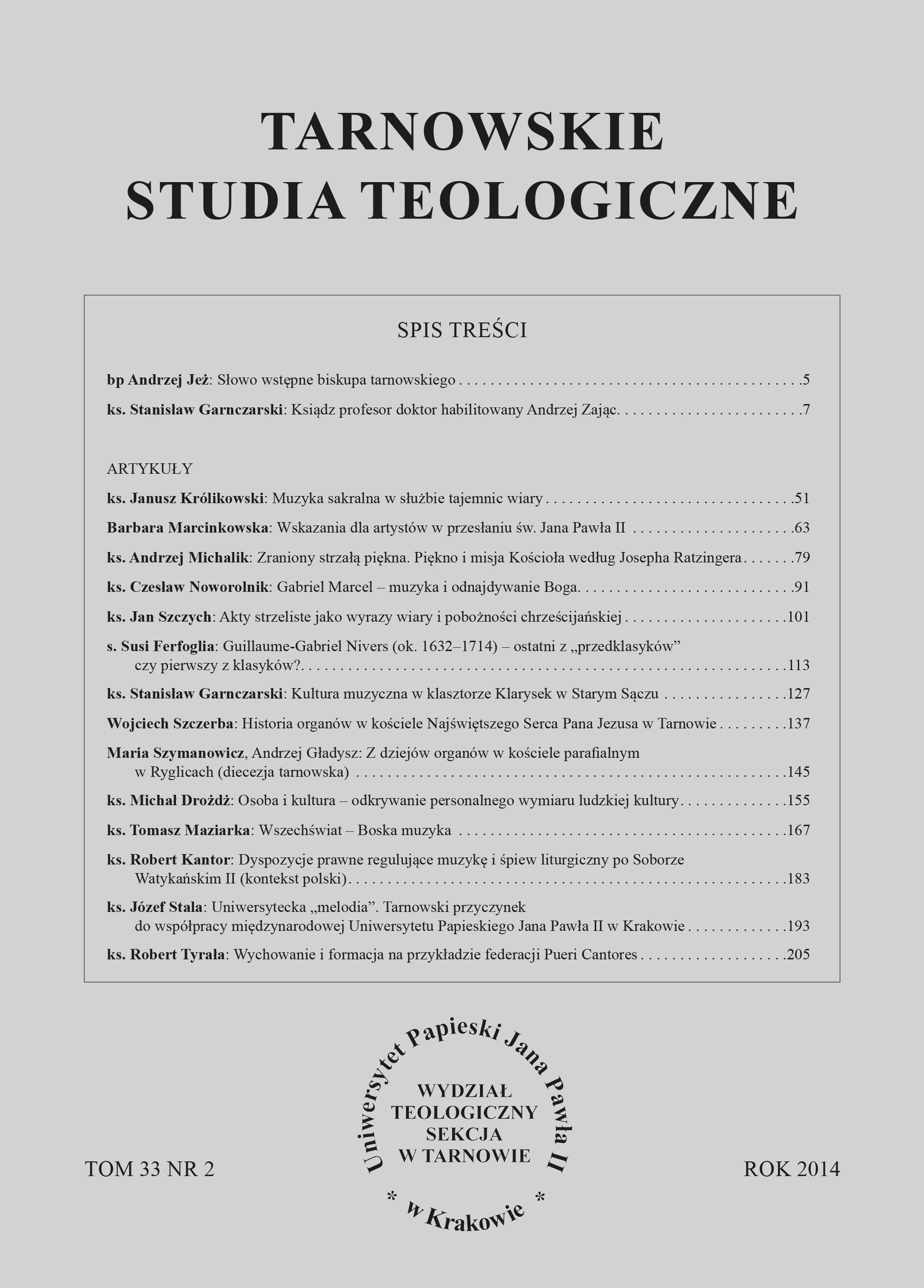Guillaume-Gabriel Nivers (ca 1632–1714) – the last of the „pre-classics” or the first of the classics?
DOI:
https://doi.org/10.15633/tst.689Keywords:
classical organ music, organ verses, Gregorian chant, church music, liturgy, alternatim technique, organ booksAbstract
In the French music the period 1665–1703 is the time of great changes, when the style known generally as classical organ music of the so-called Grand Siècle took its shape. Among the numerous composers active during that period was Guillaume-Gabriel Nivers, organist of Saint-Sulpice – one of the most eminent Parisian churches. His career developed in connection with the church, the convent of Benedictine nuns as well as the school for noble young ladies in Saint-Cyr-l’École. That is why Nivers composed only church music. His works, collected in three organ books and in the Thièry manuscript (ascribed to him), are representative of French music composed in the 17th–18th cent. It was the tradition associated with alternatim technique, with alternating sections in organ verses and chant. The thee organ books by Nivers constitute a large opus which includes numerous genres characteristic for the period; Nivers worked on all of them systematically, which led to their development, especially in liturgical music.
On the one hand, Nivers was „pre-classical”, which can be seen in his use of Gregorian cantus firmus (Mass, Hymns, Sequences), from which his contemporaries would largely depart, as well as in the „modal thinking”, especially in the works included in the Premier and Troisième Livre d’Orgue. On the other hand, his oeuvre opened the door to welcome the new period, which can be seen primarily in the „new style” – melodious, based on meticulously chosen registers, varied according to the character of a particular piece and its place in liturgy.
Downloads
Published
Issue
Section
License
Authors who publish with this journal agree to the following terms:
- Authors retain the copyright and full publishing rights without restrictions, and grant the journal right of first publication with the work simultaneously licensed under a Creative Commons Attribution 4.0 International License that allows others to share the work with an acknowledgement of the work's authorship and initial publication in this journal.
- Authors are able to enter into separate, additional contractual arrangements for the non-exclusive distribution of the journal's published version of the work (e.g., post it to an institutional repository or publish it in a book), with an acknowledgement of its initial publication in this journal.
- Authors are permitted and encouraged to post their work online (e.g., in institutional repositories or on their website) prior to and during the submission process, as it can lead to productive exchanges, as well as earlier and greater citation of published work (See The Effect of Open Access).

